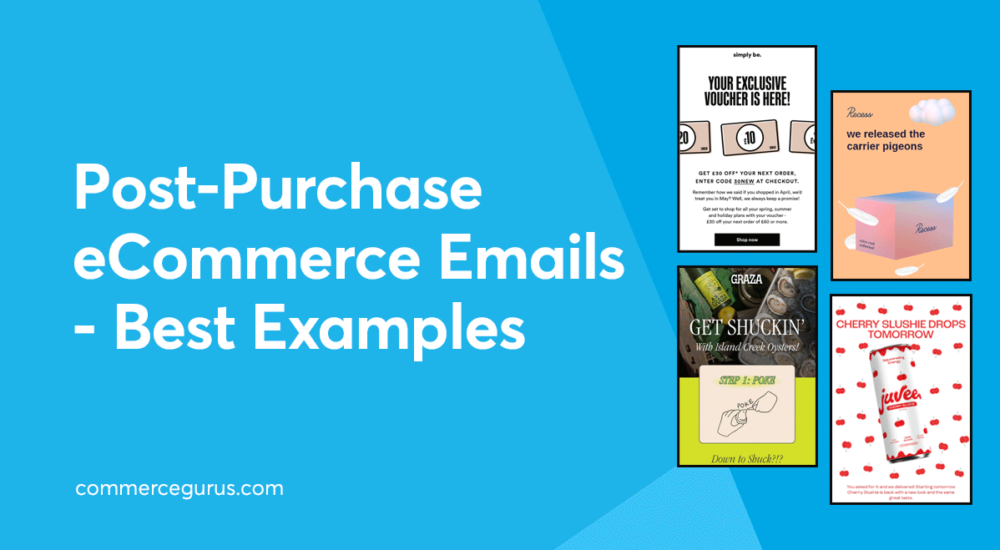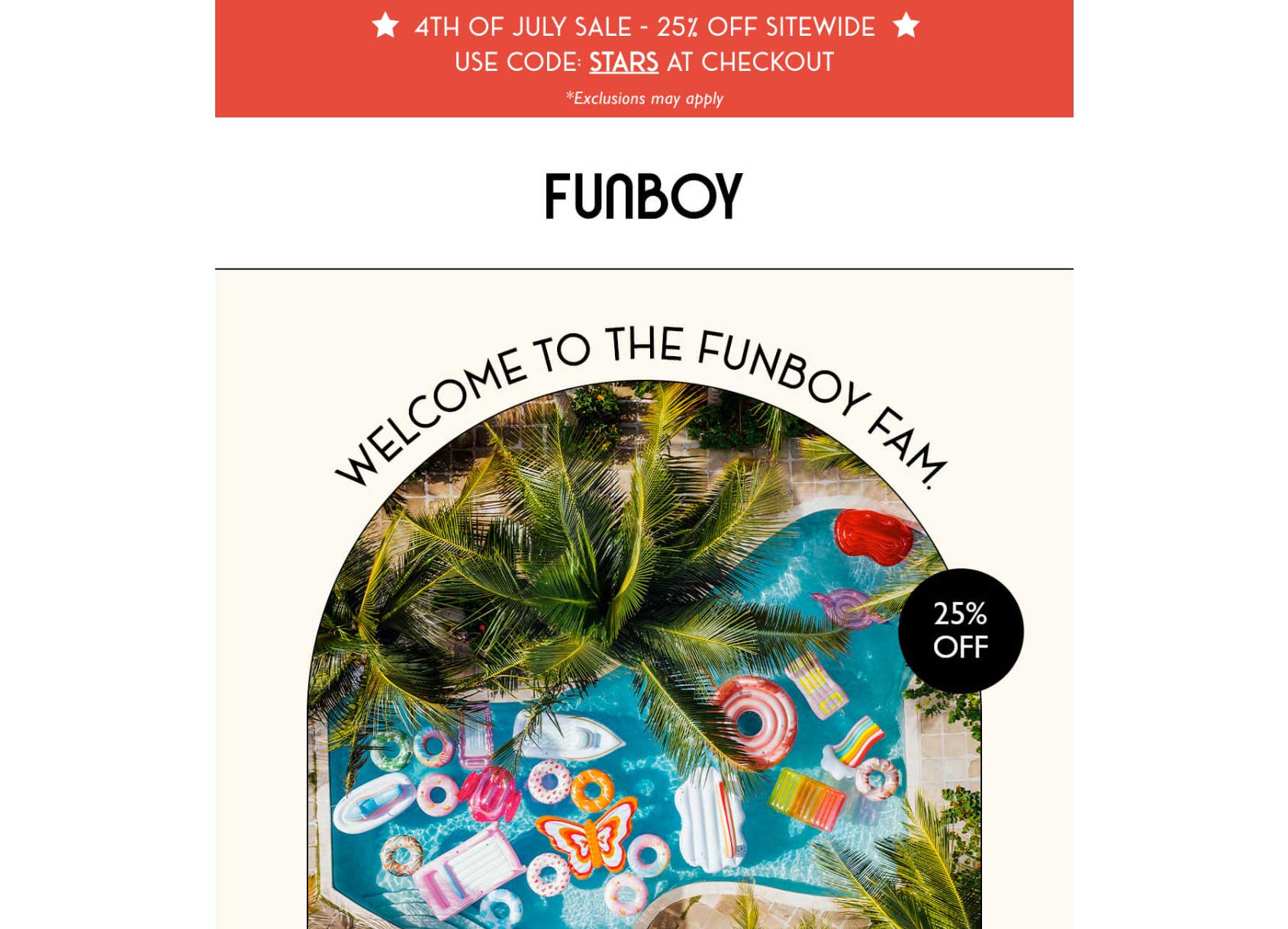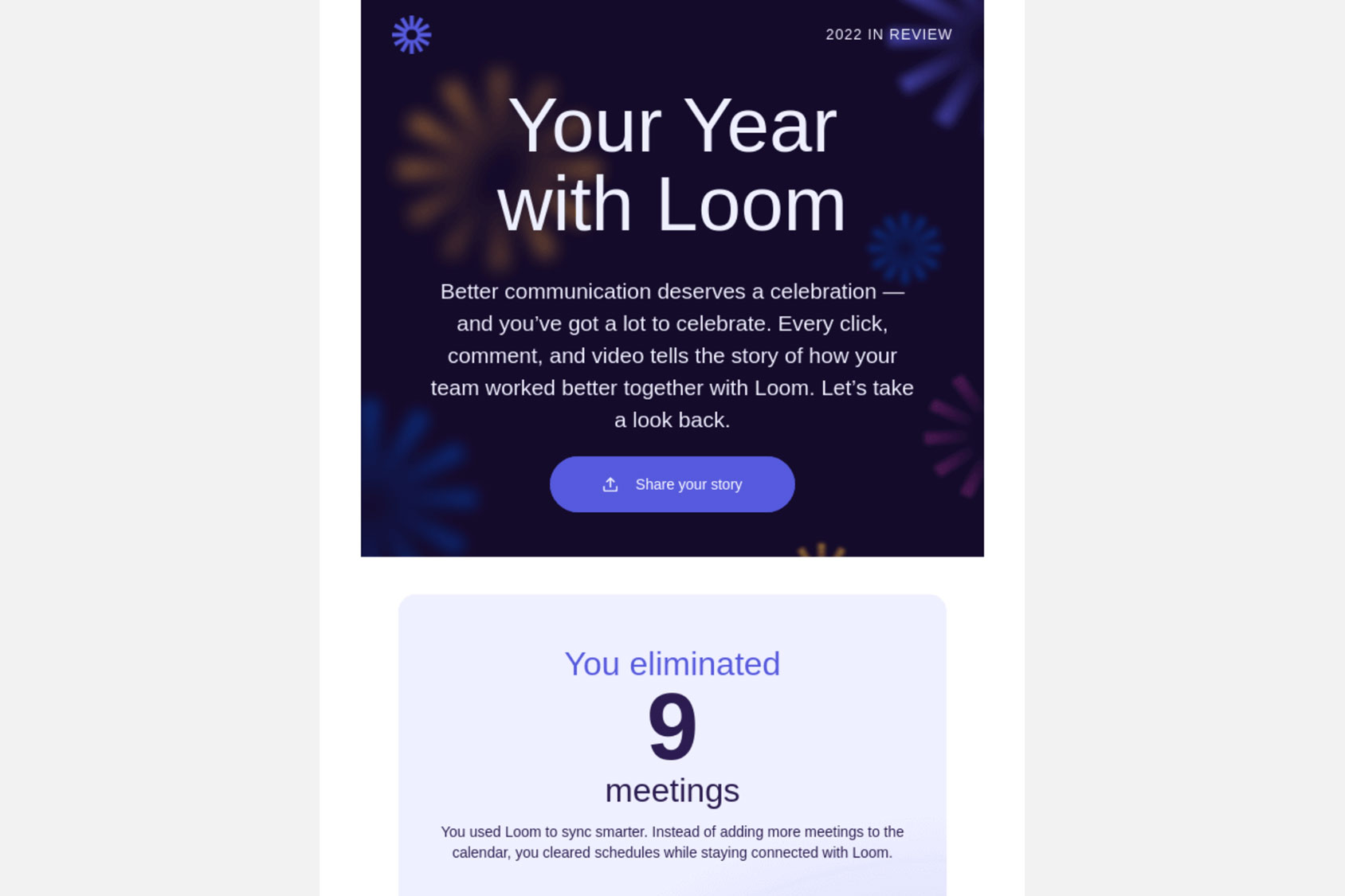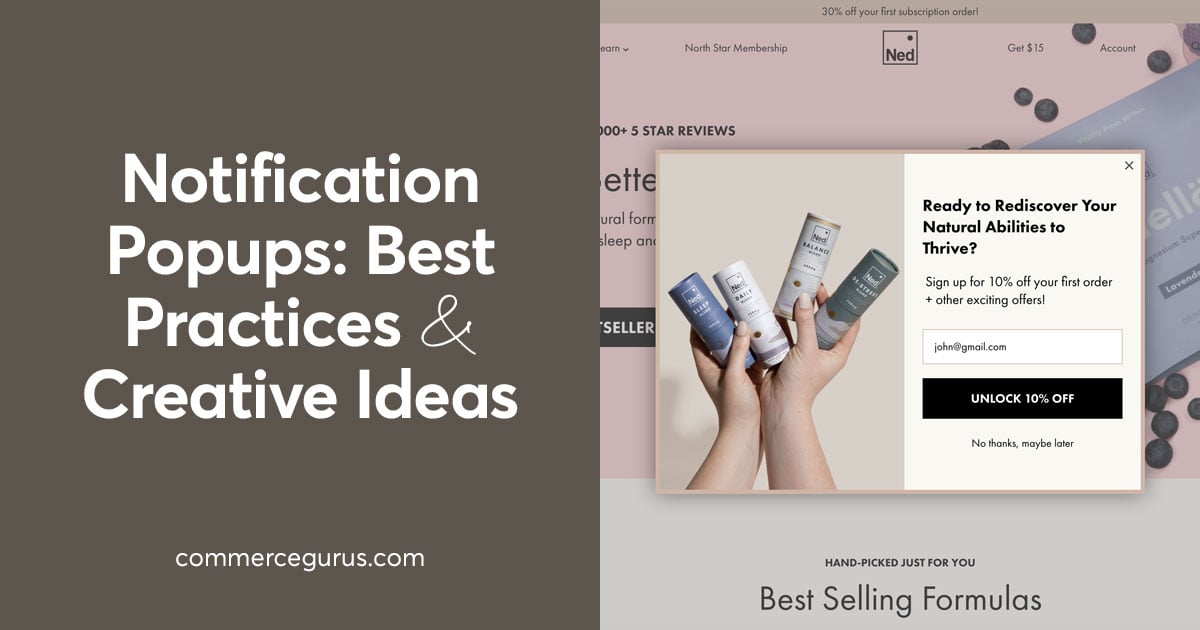Once you’ve secured an order from a new customer, the start of your relationship has only just begun.
Rather than settling for one-time customers, you should see the initial transaction as a chance to nurture a long-term relationship that leads to repeat purchases.
One way to do this is to get to grips with post-purchase eCommerce emails.
These emails are an excellent way to stay in touch with your customers, form a connection, and generate more sales, and there are many different types of post-purchase eCommerce emails you can send.
Some are essential, such as order confirmations, while others, like the customer-appreciation and year-in-review emails, are more optional.
However, as you’re about to see from these nine examples of post-purchase eCommerce emails, there are many ways to reach out to your customers after they’ve placed an order. Each one has its own benefits, whether that’s for you or the customer.
What they all have in common, though, is that they can help you to provide better customer services and generate repeat orders — something all eCommerce store owners should be aiming for.
Best Examples of Post-Purchase eCommerce Emails
As the name suggests, post-purchase eCommerce emails are the emails you send your customers after they’ve made a purchase.
The primary goal of these types of emails is to update customers about their orders, while the secondary goal is to tempt them back to your site to make another purchase.
Some of the ways you can achieve the primary goal is by letting them know you’ve received their order and when it’s been shipped.
The new product announcement, product support, and customer appreciation post-purchase emails are some of your options for achieving your secondary goal.
Overall, though, these emails should be sent with the aim of providing good customer service and forging a strong connection with your customers. This means not overdoing it by sending too many emails, and that when you do ask for something, such as a customer review, you offer an incentive, such as a discount on future orders.
Welcome New Customer
Once a visitor has made their first purchase, signed up to a service, or joined your newsletter, it’s time to send them a welcome email.
As this might be the first time you’ve been invited into your customer’s email inbox, it’s vital that you make a good impression.
This email should contain all the relevant information the customer might be expecting, such as their account or order details. However, definitely try to avoid overwhelming the new customer with too much information and content. Resist the urge to make this email too promotional, too, otherwise they’ll be likely to click the unsubscribe link — which, by the way, should be clearly displayed.
As the above example from Funboy shows, the new customer welcome email is also a good opportunity to further develop your brand by using strong imagery and sticking to the style of your site. Offering a reward to new customers also goes down well, such as a discount on their next purchase or some other perk.
Order Confirmation
Customers will definitely be expecting an order confirmation email, so don’t disappoint them.
In fact, the order confirmation email is reported to have some of the highest open and click-through rates on record. Therefore, it’s highly recommended that your email includes more than just an order number.
Instead, you should think of the order confirmation email as an opportunity to strengthen your relationship with the customer and generate additional sales.
The above example from Everlywell not only confirms the order and shares the order number, but it also explains what to do when the product arrives. This is a great way to increase customer satisfaction, especially if using your product or service isn’t obvious.
As well as being informative, your order confirmation, like the Everlywell example, can also include some promotional content, such as a discount for future purchases, links to relevant content on your site, and information about your community, such as your social media accounts.
You can also highlight related products in this email. However, don’t make the content overly promotional, as it could turn visitors away. The main focus of the order confirmation email is to update and educate the recipient.
Shipment Confirmation
Like the order confirmation email, the shipping confirmation could just include a basic update.
However, savvy marketers will seize this opportunity to connect with their audience and maybe attempt to generate additional sales.
In the above example from Recess, the company has incorporated its branding into the shipping confirmation email. This can help strengthen the customer relationship with your brand, making a memorable impression that should increase the chances of them opening additional emails you send.
They’ve also made the shipping information very easy to read. The tracking button that takes the customer back to the company website is a useful addition that not only lets the customer easily find more information about the shipment but also takes the recipient back to the store where they can browse the inventory.
Although this example doesn’t include any promotional content, popular retailers, such as Amazon, often include links to related products or items the customer has been looking at in the shipping confirmation email.

New Product Announcement
One of the benefits of persuading a customer to sign up for your email list is that you can notify them of new products.
However, the success of your product launch email will depend on the information it includes.
In the example above from Juvee, you can see that the email presents the new product in an eye-catching way. It also includes a button that lets recipients opt-in to receive further notifications about the new product. There are also links that take the customer back to the store, where they can see more products.
When crafting your new product announcement email, some elements you could include are the features and benefits of the new item, the release date, information on how to place a preorder, and perhaps a discount or information about any special pricing that’s available before or on release.
If your store sells a wide variety of products, you might decide only to notify customers who’ve bought a similar product in the past about the release of a new product. Doing so would make these emails more effective, compared to trying to promote new products that have nothing in common with previous purchases.
More targeted new product announcement emails should also increase the open and click-through rates of your campaigns — something that can help prevent future emails from ending up in the spam folder.
Product Support
If you’ve sold a product that’s complicated to use or the customer might not be familiar with, then sending a post-purchase email that contains instructions is a great idea.
Sending a helpful guide post-purchase will increase customer satisfaction and reduce returns as the customer will be able to get the most out of their new item.
The above example from Graza contains instructions in the email. This works well as the instructions only have a few steps and can be illustrated with a few images.
However, embedding a video in the email could work better if you sell more complicated products. Linking directly to the product instruction pages on your website or attaching the instructions, for example, in a PDF document, might be a better solution.
The best approach really depends on the product, how easy or intuitive it is to use, and how experienced your customers are likely to be with it.
But either way, sending a post-purchase email that lets customers know how to use your product or at least how they can get in touch is highly recommended.
Product Usage Update
Another way to increase satisfaction and the chances of achieving a reorder or recurring subscription is to provide customers with information about how they’ve been using the product.
Grammarly does a great job in the featured example. Their email not only informs customers of how much they’ve used the product, but it also gamifies the experience by highlighting the usage streak and how the customer compares to other Grammarly users.
Obviously, this works better with some types of products than with others. Digital services or online memberships where customer data is easily accessible are good candidates.
However, if your product is compatible with this type of eCommerce post-purchase email, it can be a great way to remind customers how much they’ve been using your product. Doing so should increase the chances of them remaining a customer when it’s time to renew or reorder.
Review Request
Getting reviews for your products or services has a few important benefits. One is that it lets you know what you’re doing right and where there’s room for improvement. Another is that publishing reviews makes it more likely other customers will buy from you.
Due to this, it’s well worth adding a review request to your post-purchase email sequence. Like many of the other examples, this email can be automated so that it’s sent after the customer has had enough time to enjoy the product but not so long that they’ve forgotten about you.
Detailed reviews that include information that can help other customers decide to make a sale are more valuable than a simple star rating. However, try to avoid asking customers too many questions in your review and feedback forms, as the extra effort might put them off.
If you’ve yet to receive any reviews for a particular product, it could be worth offering an incentive to customers who provide feedback. A common option is to offer a discount on their next purchase.
In the above example from Target, the review request email includes a star rating form that, when clicked, takes the customer to a longer form with more fields. Beneath the review button is a section that encourages customers who might be about to leave a negative review to get in touch first. This gives customer support a chance to rectify the issue before negative feedback is submitted and potentially published on the site.
Customer Appreciation
Sending emails to thank and reward customers for their business is another post-purchase email you should consider using.
These customer appreciation emails can come in many forms, so there’s likely to be one that suits your business.
Some examples include thanking and rewarding customers who’ve made a purchase in a previous time period, such as the above example from Simply Be; contacting customers who’ve been loyal shoppers in the past but haven’t placed an order for a while; and customers who’ve purchased a big ticket item or have accumulated sales over a certain amount.
Including information about products you think the customer might like, such as items related to their last purchase, is highly recommended. Along with the reward, this can increase the chances of them placing another order.
Year in Review
Year-in-review emails are similar to the product usage update, but they can be a bit more versatile. If you don’t have the data that’s needed for the product usage update, you can use the year-in-review email to share information about your business, including milestones you’ve hit or goals you’ve achieved.
Don’t just brag about your accomplishments, though!
Make the customer the focus of your achievements and thank them for enabling your success in the past year. Highlighting the impact your customers have had on your success can strengthen the bond between them and your brand and increase loyalty.
These emails can also make customers more confident about your business as they can see you’re growing and improving.
If relevant, include advice for your customers or share what you’ve learned in business over the past year to provide them with some actionable insights.
Summary
As you can see, there are many different types of post-purchase eCommerce emails you can incorporate into your marketing campaigns.
Good post-purchase emails are a mix of informative and promotional content. Some are more informative than others, such as the order confirmation email, while others, like the new product announcement email, are more towards the promotional end of the spectrum.
However, by adding extra content to your post-purchase emails, you can make your informative emails slightly more promotional, for example, by subtly recommending related products.
You can do the same with your promotional emails by adding a discount code to your new product announcements.
Doing so makes it more likely that you’ll get what you want, such as a new order or product review, while the customer also gets what they want in the form of a discount or some other reward.
Now that you have inspiration for your post-purchase communications, it’s time to take action and craft your first email.
















 The Best WooCommerce Hosting Plans – Part One
The Best WooCommerce Hosting Plans – Part One Increase your store traffic with Yoast WooCommerce SEO
Increase your store traffic with Yoast WooCommerce SEO Why You Should Use Exit Intent Popups on Your eCommerce Store
Why You Should Use Exit Intent Popups on Your eCommerce Store What we’ve been up to – plus WordCamp 2016
What we’ve been up to – plus WordCamp 2016
Fantastic breakdown! 🙌 I especially appreciate your emphasis on abandoned cart emails and post-purchase follow-ups—two areas that often get overlooked but yield some of the highest ROI.
One thing I’d add: tying in social proof can significantly boost email performance. For example, including a customer quote or star rating in a cart reminder email adds trust and persuasion—research shows this can increase conversions by up to 65% .
Also, love that you highlighted the “Welcome” and “Thank‑You” flow—it’s one of the strongest sequences, often outperforming standard promo blasts .
Keep up the great content—can’t wait to try combining dynamic discounts with social proof as you discussed!